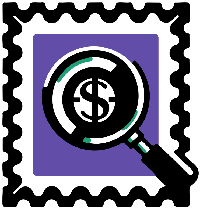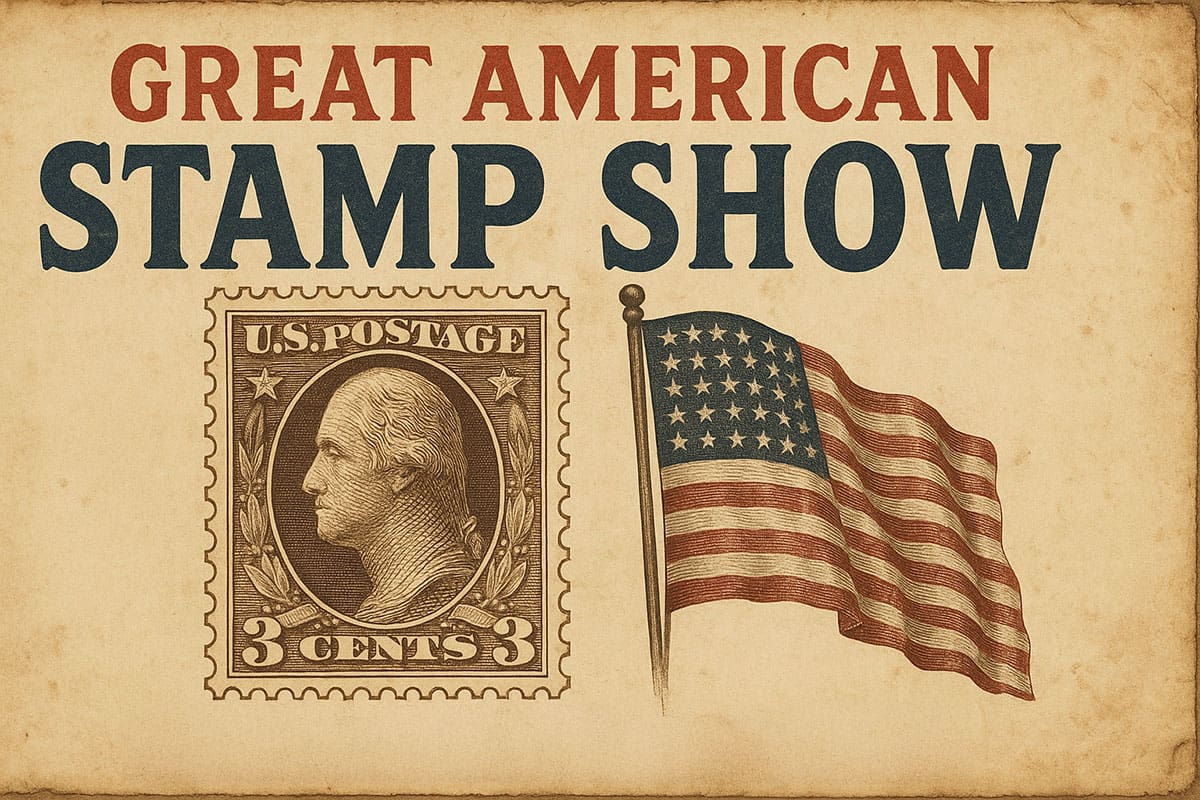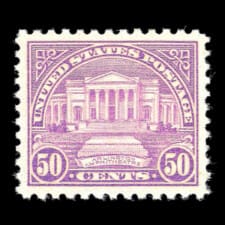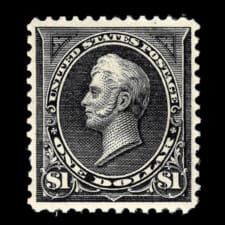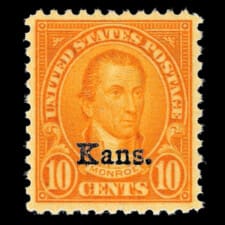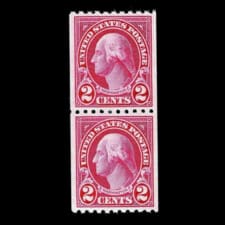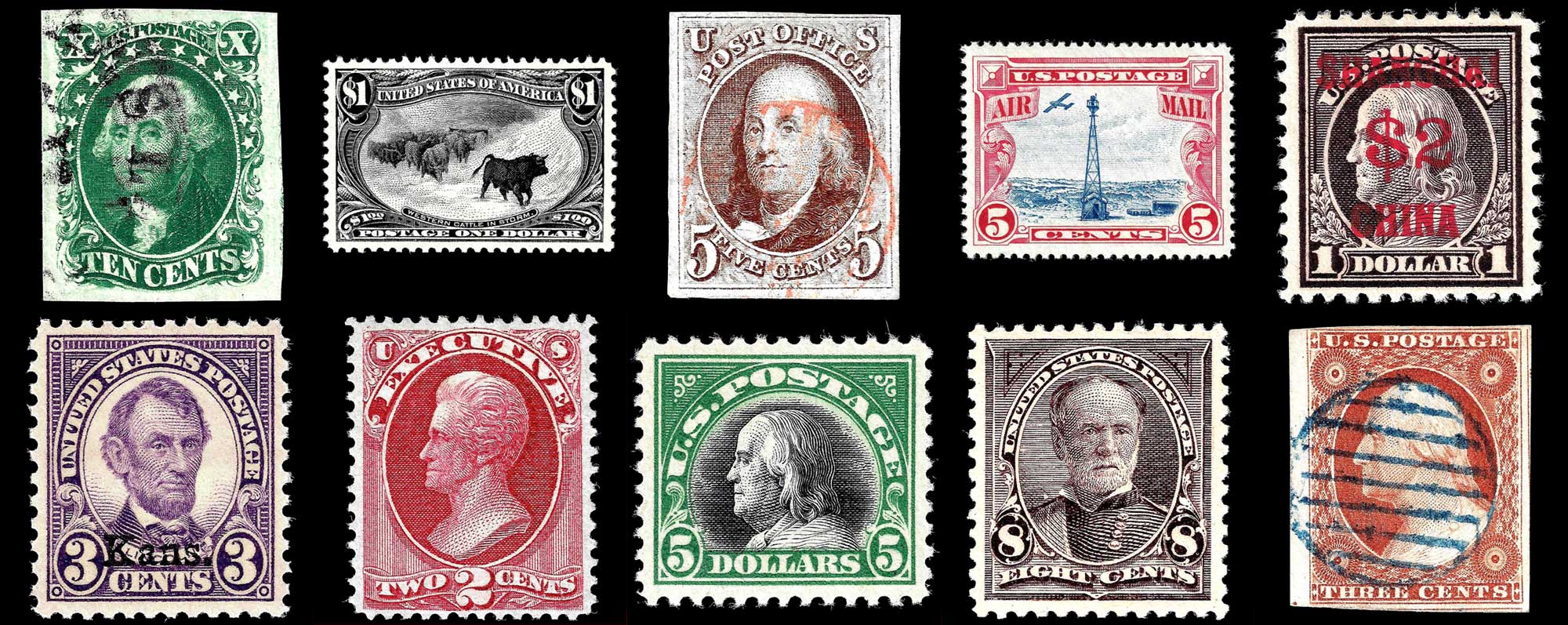This free Stamp Identifier tool offers 2 different ways of identifying your stamps. You can either describe your stamp, or view the visual stamp design gallery below.
If you can’t find the stamp you are looking for on this page, try posting it in the Collectors Community to get help identifying it!
Describe Your Stamp
Description Examples
1c blue franklin facing right | purple train three cent stamp | 5 cents brown portrait of a man | red eagle with blue flags | reddish orange george washington | united states postage text with horse two cents
If you can’t find the stamp you are looking for, that doesn’t mean you can’t find it’s value! You can view the full list of stamps that have values here.
– OR –
Identify Stamps By Design
Visually identify stamps by exploring the gallery below. Note that some stamps may be indistinguishable from their true identity by only looking at an image. Click a stamp to learn more about what makes it unique and distinguishable from other stamps that have the same, or similar design.
Quick Jump
If you know the Scott number, you can jump to a particular series by clicking one of the ranges below.
| Scott Numbers | Year Of Issue | Description |
|---|---|---|
| 1-2 | 1847 | Imperforate, Thin Bluish Wove Paper, First Issue |
| 3-4 | 1875 | Reproductions Of 1847 Issue, Imperforate, Bluish Paper Without Gum |
| 5-17 | 1851 | Imperforate |
| 18-39 | 1857-61 | Perf 15½, Same Designs As 1851 Issues |
| 40-47 | 1875 | Perf 12, White Paper, Without Gum, Reprints Of 1857-60 Issue |
| 63-72 | 1861-62 | Perf 12 |
| 73-78 | 1861-66 | Perf 12 |
| 79-85E | 1867-68 | Perf 12, Various Grills, Same Designs As 1861-66 Issues |
| 86-91 | 1867-68 | Perf 12, E. Grill, Same Designs As 1861-66 Issues |
| 92-101 | 1867-68 | Perf 12, F. Grill, Same Designs As 1861-66 Issues |
| 102-111 | 1875 | Perf 12, Without Grill, Hard White Paper, White Crackly Gum, Re-Issue Of 1861-66 Issues |
| 112-122 | 1869 | Perf 12, G. Grill, Pictorial Issue |
| 123-132 | 1875 | Perf 12, Without Grill, Hard White Paper, White Crackly Gum, Re-Issue Of 1869 Issue |
| 133 | 1880-82 | Perf 12, Without Grill, Soft Porous Paper, Re-Issue Of 1869 Issue |
| 134-144 | 1870-71 | Perf 12, H. Grill, Large Bank Notes |
| 145-155 | 1870-71 | Perf 12, Large Bank Notes, No Grill |
| 156-166 | 1873 | Perf 12, Same Designs As 1870-71 Issues With Secret Marks |
| 178-179 | 1875 | Perf 12, Yellowish Wove Paper, Regular Issue |
| 182-191 | 1879 | Perf 12, Soft Porous Paper, Same Design As 1870-75 Issues |
| 205 | 1882 | Perf 12, Regular Issue |
| 206-209 | 1881-82 | Perf 12, Designs Of 1873 Re-Engraved |
| 210-211 | 1883 | Perf 12, Regular Issue |
| 212-214 | 1887 | Perf 12, Regular Issue |
| 215-218 | 1888 | Perf 12, Same Designs As 1870-83 Issues |
| 219-229 | 1890-93 | Perf 12, Small Bank Note Issue |
| 230-245 | 1893 | Perf 12, Columbian Exposition Issue |
| 246-263 | 1894 | Perf 12, Unwatermarked, Same Designs As 1890-93 Issues With Triangles In The Top Corners |
| 264-278 | 1895 | Perf 12, Watermark 191 Double Line USPS, Same Designs As 1894 Issues |
| 279-284 | 1897-1903 | Perf 12, Watermark 191 Double Line USPS, Same Designs As 1894 Issues In New Colors |
| 285-293 | 1897 | Perf 12, Trans-Mississippi Exposition Issue |
| 294-299 | 1901 | Perf 12, Watermark 191 Double Line USPS, Pan-American Exposition Issue |
| 300-313 | 1902-03 | Perf 12, Watermark 191 Double Line USPS, Regular Issue |
| 314-315 | 1906-08 | Imperforate, Watermark 191 Double Line USPS, Same Designs As 1902-03 Issue |
| 319-320A | 1903-08 | Perf 12 & Imperforate, Watermark 191 Double Line USPS |
| 323-327 | 1904 | Perf 12, Watermark 191 Double Line USPS, Louisiana Purchase Exposition Issue |
| 328-330 | 1907 | Perf 12, Watermark 191 Double Line USPS, Jamestown Exposition Issue |
| 331-342 | 1908-09 | Perf 12, Watermark 191 Double Line USPS, Regular Issue |
| 343-347 | 1908-09 | Imperforate, Watermark 191 Double Line USPS, Regular Issue |
* The Scott Numbers are the copyrighted property of Amos Media Company, and are used here with permission from Amos. The marks Scott and Scott’s are Registered in the U.S. Patent and Trademark Office, and are trademarks of Amos Media Company. No use may be made of these marks or of material in this exhibition, which is reprinted from a copyrighted publication of Amos Media Company., without the express written permission of Amos Media Company, Sidney, Ohio 45365
1847 | Imperforate | Thin Bluish Wove Paper
1875 | Imperforate | Bluish Paper Without Gum
Reproductions Of 1847 Issue
1851-1857 | Imperforate
1857-1861 | Perf 15½
Same Designs As 1851 Issues
1875 | Perf 12 | White Paper | Without Gum
Same Designs As 1857-60 Issue
1861 | Perf 12
1861-1866 | Perf 12
1867-68 | Perf 12 | Various Grills
Same Designs As 1861-66 Issues
1867-68 | Perf 12 | E. Grill
Same Designs As 1861-66 Issues
1867-68 | Perf 12 | F. Grill
Same Designs As 1861-66 Issues
1875 | Perf 12 | Without Grill | Hard White Paper | White Crackly Gum
Re-Issue Of 1861-66 Issues
1869 | Perf 12 | G. Grill
Pictorial Issue
1875 | Perf 12 | Without Grill | Hard White Paper | White Crackly Gum
Re-Issue Of 1869 Issue
1875 | Perf 12 | Without Grill | Soft Porous Paper
Re-Issue Of 1869 Issue
1870-71 | Perf 12 | H. Grill
Large Bank Notes
1870-71 | Perf 12
Large Bank Notes Without Grill
1873 | Perf 12
Same Designs As 1870-71 Issues With Secrets Marks
1875 | Perf 12 | Yellowish Wove Paper
Regular Issue
1879 | Perf 12 | Soft Porous Paper
Same Designs As 1870-75 Issues
1882 | Perf 12
Regular Issue
1881-1882 | Perf 12
Designs Of 1873 Re-Engraved
1883 | Perf 12
1887 | Perf 12
Regular Issue
1888 | Perf 12
Same Designs As 1870-1883 Issues
1890-93 | Perf 12
Small Bank Note Issue
1893 | Perf 12
Columbian Exposition Issue
1894 | Perf 12 | Unwatermarked
Same Designs As 1890-93 Issues With Triangles In Top Corners
1895 | Perf 12 | Watermark 191 Double Line USPS
Same Designs As 1894 Issues
1897-1903 | Perf 12 | Watermark 191 Double Line USPS
Same Designs As 1894 Issues In New Colors
1898 | Perf 12 | Watermark 191 Double Line USPS
Trans-Mississippi Exposition Issue
1901 | Perf 12 | Watermark 191 Double Line USPS
Pan-American Exposition Issue
1902-03 | Perf 12 | Watermark 191 Double Line USPS
Regular Issue
1906-08 | Imperforate | Watermark 191 Double Line USPS
Same Designs As 1902-03 Issue
1903-08 | Perf 12 & Imperforate | Watermark 191 Double Line USPS
1904 | Perf 12 | Watermark 191 Double Line USPS
Louisiana Purchase Exposition Issue
1907 | Perf 12 | Watermark 191 Double Line USPS
Jamestown Exposition Issue
1908-09 | Perf 12 | Watermark 191 Double Line USPS
Regular Issue
1908-09 | Imperforate | Watermark 191 Double Line USPS
Regular Issue
Stamp Identification Guide
Stamp identification is a critical aspect of philately, requiring attention to detail and a comprehensive understanding of various attributes that distinguish one stamp from another. Despite their seemingly identical appearances, many stamps have different varieties based on minor differences in design, color, type, paper, watermarks, and perforation measurements. This guide aims to provide a factual overview of these key areas to aid collectors in accurately identifying their stamps.
Design Characteristics
The design of a stamp is its most visible feature, but hidden within these designs are subtle differences that can significantly impact a stamp’s identification. Stamps that appear the same might have variations due to secret marks or adjustments made to the original printing plates. These changes, often made for reasons such as restoring a printing plate or anti-counterfeiting efforts, are critical for collectors to identify different varieties and understand their significance.
Color Shades
Variations in color shades, although subtle, can indicate a different identification or catalogue number for a stamp. These differences can arise from variations in ink formulations, printing press adjustments, or exposure to environmental elements over time. Recognizing these variations is essential for precise stamp identification and classification.
Stamp Types
Stamps with the same design can differ in form, such as being imperforate or coil stamp versions. Imperforate stamps lack the perforations typically found on stamps, while coil stamps are designed for use in automatic dispensers. These differences reflect the stamps’ intended use and production methods, offering insights into their historical and production contexts.
Paper Type
The type of paper used for printing stamps can also serve as a distinguishing factor. Variations in paper thickness, texture, and type (e.g., porous or laid paper) can differentiate stamps of the same design. The choice of paper is influenced by production capabilities, cost considerations, and aesthetic decisions, making it a significant factor in stamp identification.
Watermarks
Watermarks are designs embedded in the stamp paper, visible when subjected to certain viewing conditions. They serve as security features and authenticity markers. Variations in watermarks or their positions can help identify different issues of stamps that are visually identical in other respects. Knowledge of watermarks is crucial for identifying rare and specific stamp varieties.
Perforation Measurements
Perforation measurements, indicating the number of perforations within a specific length, can vary among stamps with the same design. These differences reflect changes in production processes or the equipment used. Understanding perforation patterns is essential for the accurate classification and identification of stamps, as it provides another layer of detail that distinguishes one variety from another.
